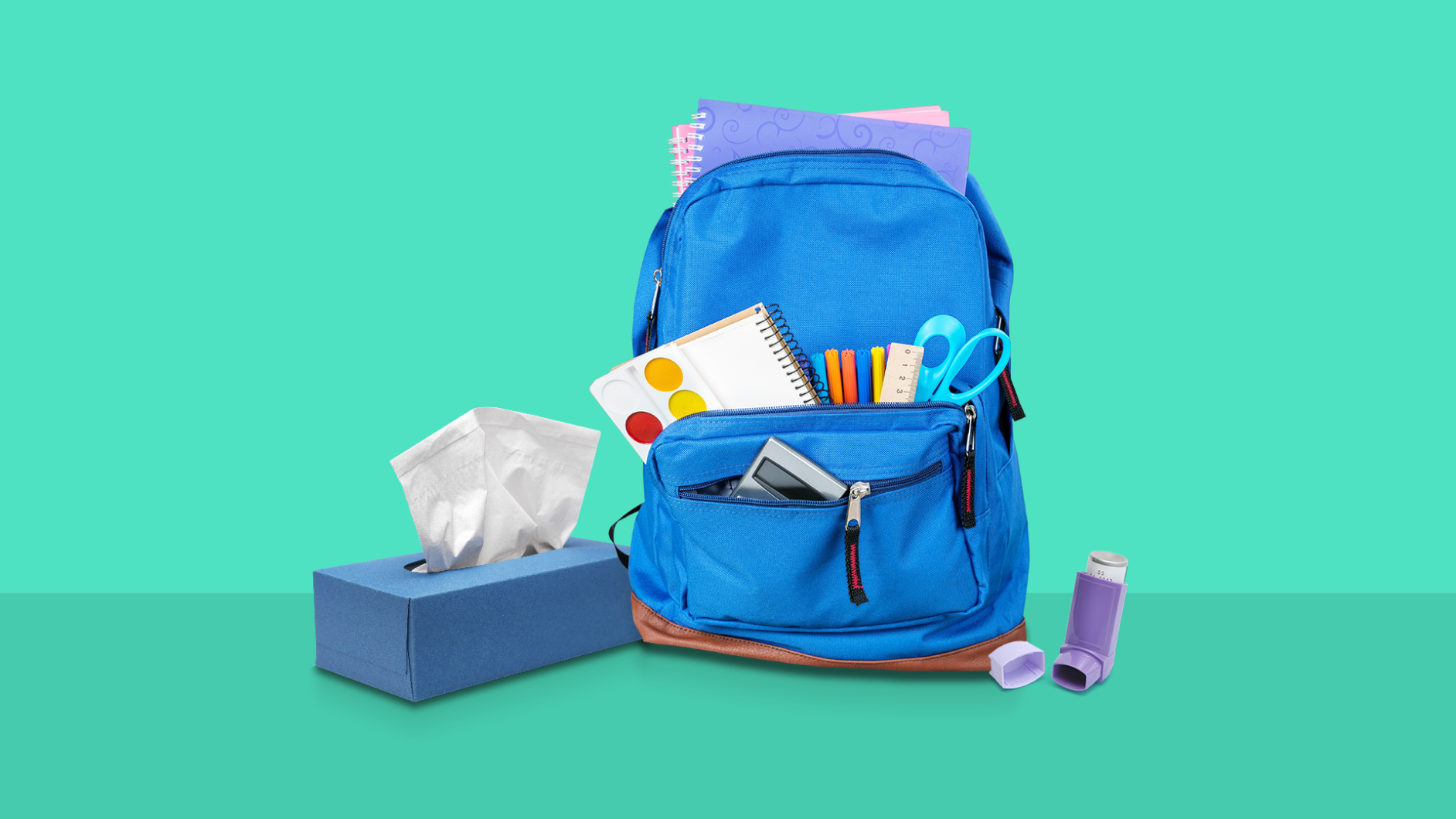Summer vacation is a break from alarm clocks, packed lunches, and days spent in the classroom. And, for kids with allergies, asthma, or allergic asthma, it’s a break from certain allergens and triggers. Back-to-school means it’s time to stock up on pencils, glue sticks, crayons, and notebooks. The new school year is also time to take precautions to avoid a potentially dangerous resurgence of respiratory symptoms as kids return to the classroom.
Mold in a school locker room, or a new coat of paint applied to freshen up a classroom over the summer can cause anything from runny noses to full-blown asthma attacks—especially if your child has been off their medication throughout the summer months. Before a trigger escalates to a health crisis, take action. A few precautions can go a long way to prevent problems.
Asthma attacks surge
Many kids in countries across the globe experience a sharp rise in asthma exacerbations when they return to school, explains David Stukus, MD, a member of the American College of Allergy, Asthma & Immunology (ACAAI). The ACAAI refers to these problems as the “September Spike.”
There’s a whole laundry list of reasons why, too:
- exposure to viral illnesses
- changes in the weather
- dust mites in school carpeting
- pet dander on classmates’ clothes
- strong odors or dust from chalk and art supplies
- fragrance reactions to perfumes or deodorants
- autumn allergens like ragweed and mold spores
- poor ventilation at school
Any one of these can trigger an asthma attack. Parents need to anticipate the likely presence of these common triggers and be prepared.
Create an asthma action plan for school.
“It is important to make sure asthma treatment plans are updated each year prior to autumn, that all prescriptions are current, and that any recommended daily [asthma] controllers are given consistently,” Dr. Stukus says.
Check in with school staff before school starts.
Also, it helps to communicate with your child’s teacher, as well as the school nurse and other school personnel—preferably before the first day of school. Don’t forget to involve your child in all of this planning and preparation, too. It’s important that your child knows what asthma symptoms or problems to watch out for and the next steps to take in an emergency.
Allergies flare, too
The beginning of the new school year is prime time for allergy flare-ups, too. According to the ACAAI, ragweed levels tend to hit their peak in mid-September in the U.S.
“Fall is peak allergy season, since not only is ragweed in the air, but a lot of viruses, too, which can make allergy symptoms worse,” says Purvi Parikh, MD, an allergist/immunologist with the Allergy & Asthma Network.
Give the school permission to administer allergy medicine.
The best approach that parents can take is to plan ahead: Fill out all the appropriate health forms needed for your child’s school so the nurse can administer medication. Send in prescription medications (in labeled bottles—if you ask your pharmacist, he/she will gladly give you an extra bottle with a label on it for school) that may need to be given by the nurse during the school day, such as an EpiPen, inhaler, and any other medications. Finally, make sure you have completed an emergency action plan.
Schedule an appointment with a pediatric allergist.
Dr. Parikh suggests seeing your child’s allergist before school starts so you can iron out all the issues, get updated prescriptions, and fill or refill medications before you have to put your child on the school bus again.
Meet with classroom staff to make sure everyone’s informed.
“It can be very helpful to check in with teachers one to two weeks after the school year begins to see how things are going and ask if they have any questions or concerns,” Dr. Stukus adds.
But don’t assume that the beginning of October will necessarily mean your child is in the clear again. There are 17 species of ragweed, so pollen can be floating through the air and menacing anyone who’s sensitive to it from August through November. Stay vigilant and encourage habits like showering at night to remove pollen from hair before going to bed.
Look for any factors that could trigger an allergic reaction.
You might put on your detective’s hat and look for any other potential factors that could affect your child’s health this autumn, too. For example, did the school get new carpeting or paint? They might contain compounds that could trigger wheezing or other symptoms, according to the ACAAI.
“If you are proactive and preventative, it will help reduce any changes of a significant reaction or bad outcome,” Dr. Parikh says.











